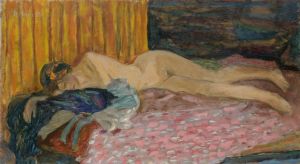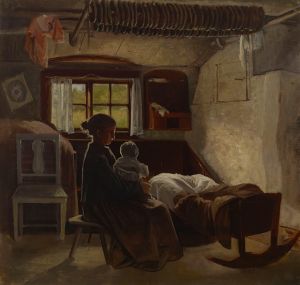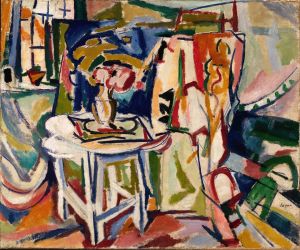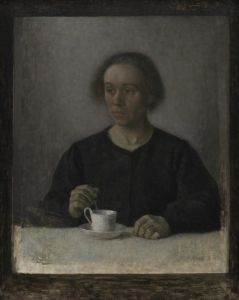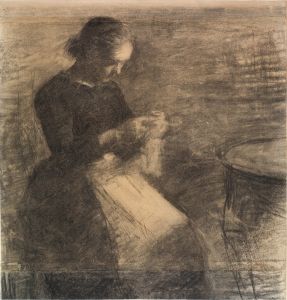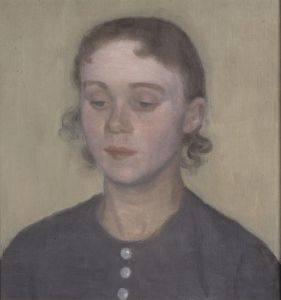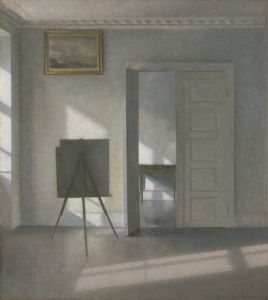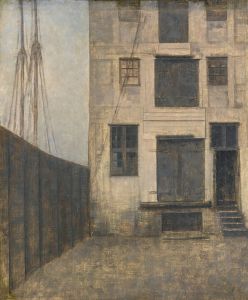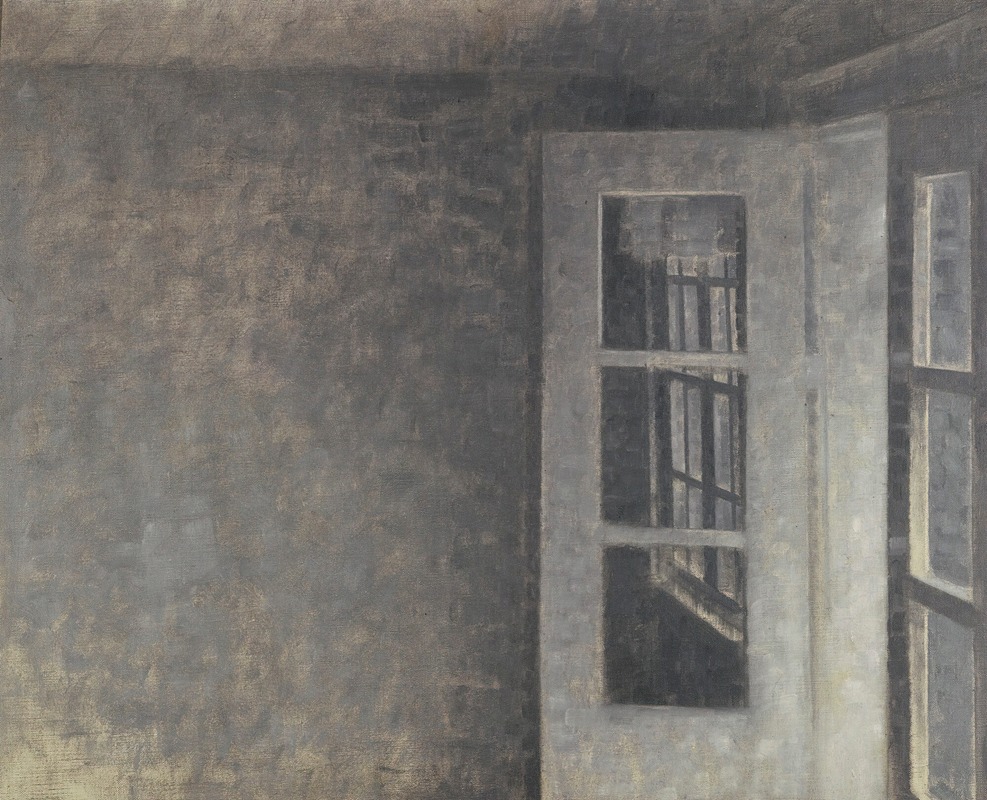
The balcony room at Spurveskjul
A hand-painted replica of Vilhelm Hammershøi’s masterpiece The balcony room at Spurveskjul, meticulously crafted by professional artists to capture the true essence of the original. Each piece is created with museum-quality canvas and rare mineral pigments, carefully painted by experienced artists with delicate brushstrokes and rich, layered colors to perfectly recreate the texture of the original artwork. Unlike machine-printed reproductions, this hand-painted version brings the painting to life, infused with the artist’s emotions and skill in every stroke. Whether for personal collection or home decoration, it instantly elevates the artistic atmosphere of any space.
Vilhelm Hammershøi's painting The Balcony Room at Spurveskjul is a notable work by the Danish artist, who is widely recognized for his evocative and understated interiors. Painted in 1911, this artwork exemplifies Hammershøi's characteristic style, which often features muted color palettes, soft light, and a sense of quiet introspection. The painting depicts a serene interior scene, focusing on a room with a balcony at Spurveskjul, a property located in the Danish countryside.
Spurveskjul, which translates to "The Sparrow's Hideaway," was a summer residence in northern Zealand, Denmark, where Hammershøi and his wife, Ida, spent time during the later years of his life. The house and its surroundings provided inspiration for several of his works. In The Balcony Room at Spurveskjul, Hammershøi captures the interplay of light and shadow as it filters through the room, creating a tranquil atmosphere. The composition is marked by its simplicity, with an emphasis on architectural elements such as doors, windows, and the balcony, rather than on human presence or narrative.
Hammershøi's interiors are often devoid of overt ornamentation or clutter, and this painting is no exception. The sparse furnishings and subdued tones draw attention to the geometry of the space and the quality of light. The artist's meticulous attention to detail and his ability to convey mood through subtle tonal variations are evident in this work. The painting reflects Hammershøi's interest in exploring the relationship between interior and exterior spaces, as the balcony serves as a transitional element between the enclosed room and the open landscape beyond.
Hammershøi's work has been associated with Symbolism and has drawn comparisons to the Dutch Golden Age painter Johannes Vermeer, particularly in his use of light and his focus on quiet, domestic scenes. However, Hammershøi's interiors are uniquely modern in their minimalism and psychological depth. The Balcony Room at Spurveskjul is a testament to his ability to transform ordinary spaces into meditative and timeless compositions.
Today, Hammershøi's paintings are celebrated for their distinctive aesthetic and emotional resonance. His works, including The Balcony Room at Spurveskjul, are held in high regard and are featured in prominent museum collections and exhibitions worldwide.





